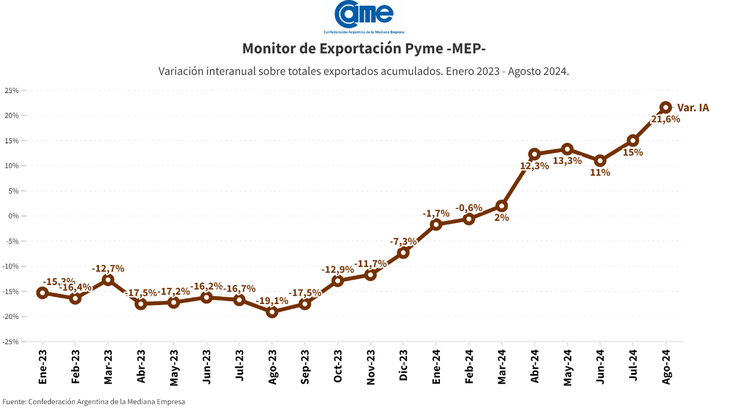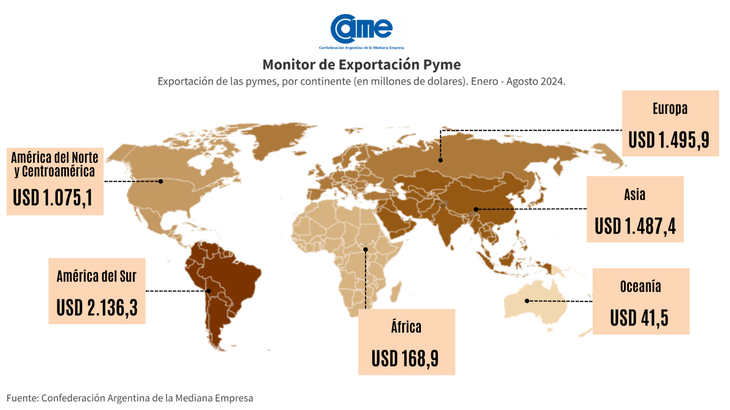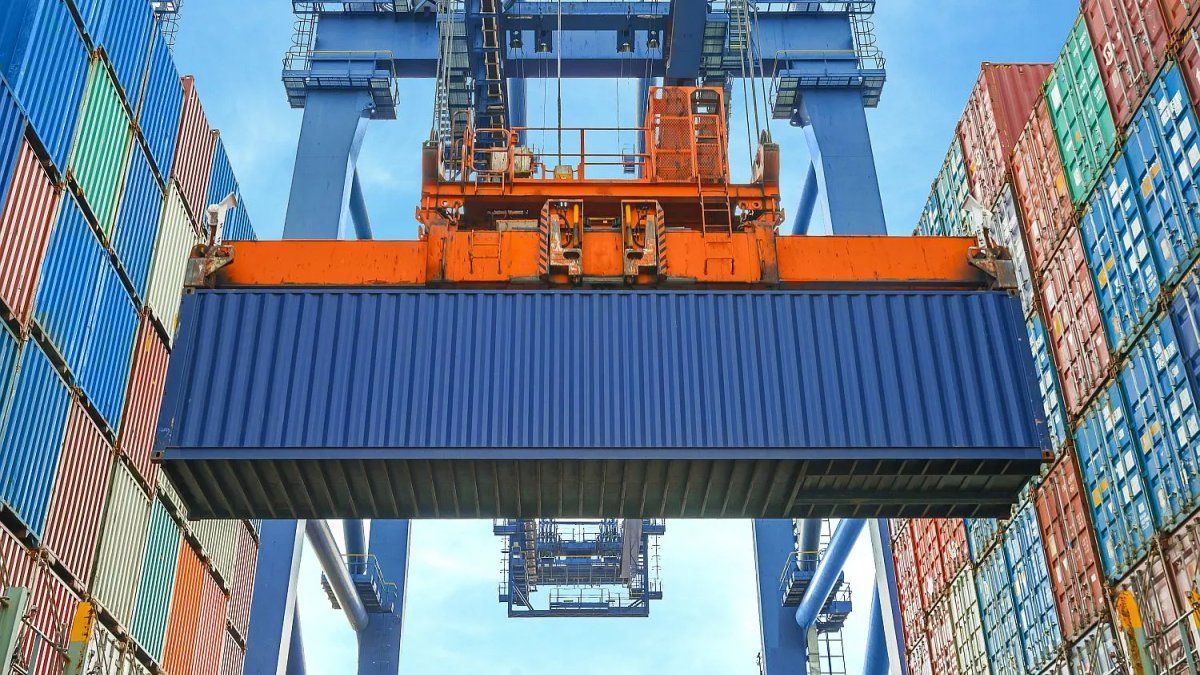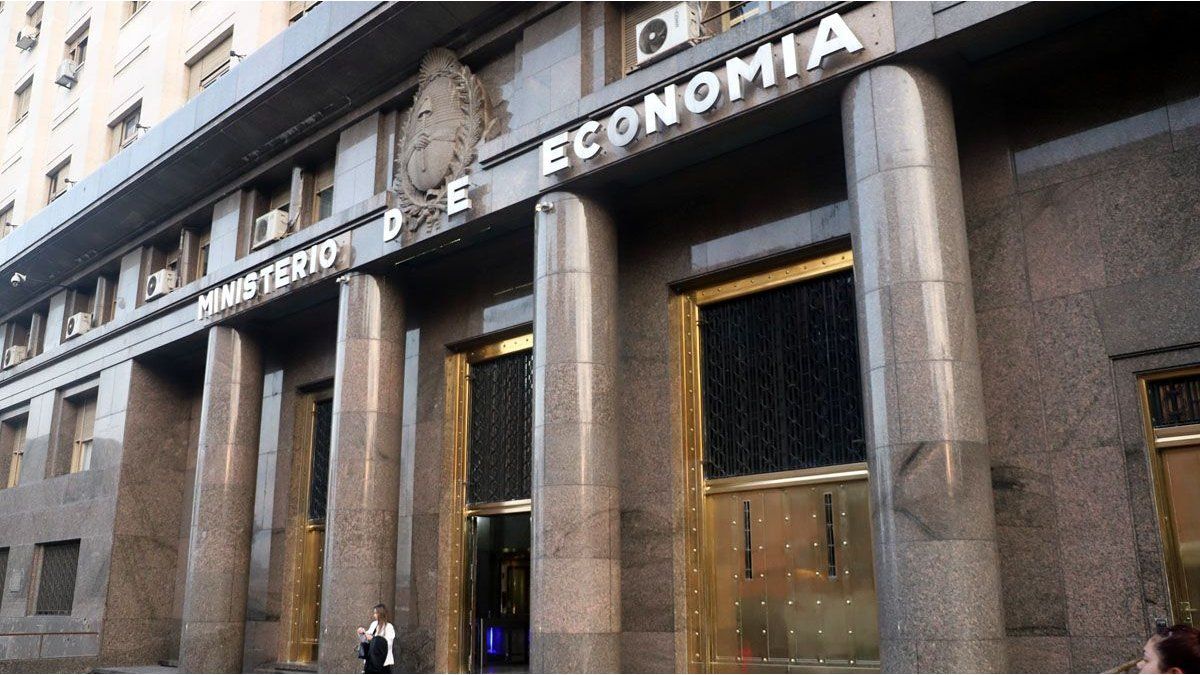According to the SME Monitor prepared by CAME, the item with the greatest increase was fabrics and textile manufactures (238.4%), while the greatest drop also occurred in tobacco and derivatives (-34.7%).
The main item exported by the country’s SMEs was unprocessed food
The exports of SME companies grew 21.6%, reaching US$6,405 million exported, which represents 11.9%of the total exported by the Argentine Republic in the period January-August 2024, reported the Argentine Confederation of Medium Enterprises (CAME).
The content you want to access is exclusive to subscribers.
In volume, SMEs exported 4.8 million tons, 11% more than the accumulated first eight months of 2023. This similarity between growth in dollars and in volume indicates a real increase in SME exports. With these values, SMEs exported, on average, US$1,325 per ton.


Of the 5,104 companies that exported in this period, 3,524 are SMEs, meaning that, for the period analyzed, 69% of the operators are SMEs.
unnamed.png

In volume, SMEs exported 4.8 million tons
Sector analysis
In the first eight months of the year, two of the 16 items analyzed showed falls in dollars, Tobacco and derivatives were the category with the greatest decrease (-28.1%), while the category with the greatest growth was miscellaneous manufacturing (1,636.9%). In tons the The greatest increase was in the category of fabrics and textile manufactures (238.4%), while the greatest fall was also in tobacco and derivatives (-34.7%).
CAME warning: exports without added value grew strongly
The main item exported by the country’s SMEs was unprocessed food, representing 50.9% of the total exported. Although this is positive in terms of volume, reflects a loss of added value, Since by not processing these foods before exporting them, opportunities to generate greater income and jobs are lost. Local processing allows more value to be captured in the production chain, by involving activities such as product transformation and improvement, which usually requires more technology and specialized labor.
An example is the peanut complex, which represents 15.4% of regional exports according to the Export Monitor of Regional Economies (MEER). Despite their importance, a large part of these exports correspond to unprocessed peanuts, limiting the economic potential. If the addition of value in products derived from peanuts, such as oils or snacks, were promoted, economic growth could be better taken advantage of and dependence on international price fluctuations of raw materials could be reduced.
33.4% (US$2,136.3 million) of the exports of Argentine SMEs had South America as the main destination, with Brazil and Chile as the main partners (US$1,359.4 million).
The second most important continent for Argentine small and medium-sized companies is Europe (23.4%), where the Netherlands, Spain and Italy are the main trading partners (US$701.9 million).
Finally, it should be noted that, of the more than 198 possible export destinations for Argentine SMEs, only 20 countries concentrate more than 79% of operations (US$5,096.6 million).
unnamed (2).png

Source: Ambito




